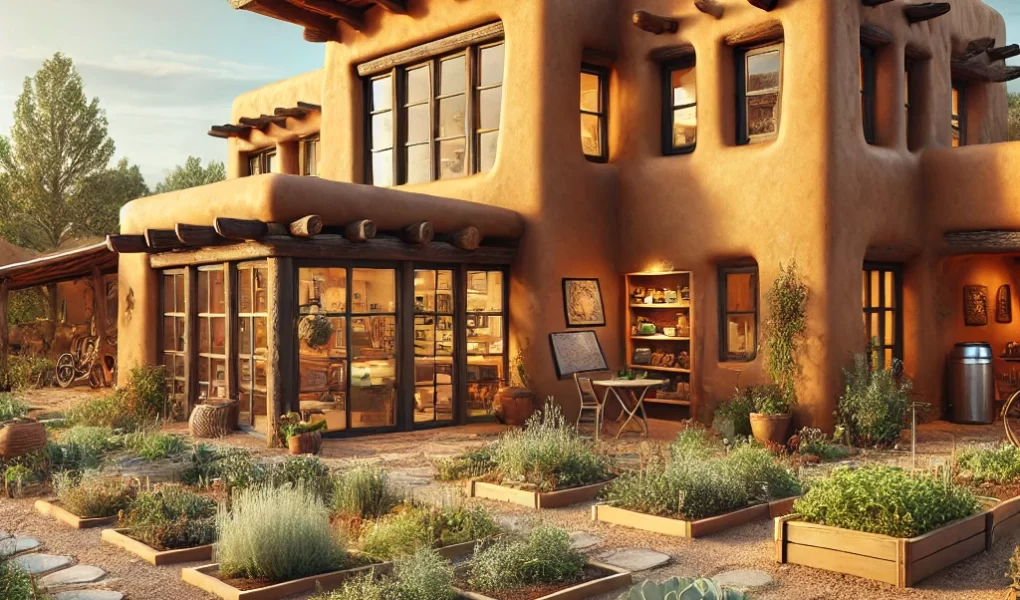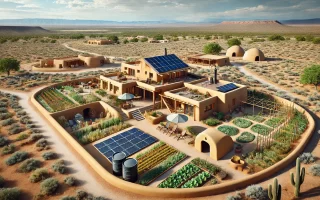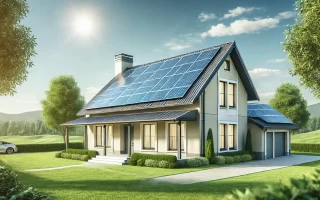Building with Earth: Why Adobe is the Ultimate Sustainable Material
Imagine building a home that stays cool in the summer, warm in the winter, and is made entirely from natural materials. That’s the magic of adobe construction—a time-tested, eco-friendly building method that has been used for centuries across the world.
With the rising costs of construction materials and growing concerns about environmental sustainability, adobe is making a comeback. These sun-dried earth bricks offer a low-cost, energy-efficient, and sustainable way to build homes, community structures, and off-grid dwellings.
Whether you’re planning an off-grid homestead, a sustainable home, or just looking for a greener way to build, this guide will walk you through:
✅ What is Adobe?
✅ Why Adobe is One of the Most Sustainable Building Materials
✅ How to Build with Adobe (Step-by-Step Guide)
✅ The Benefits of Adobe Homes
Let’s dig in! 🏡🌱
What is Adobe?
Adobe is one of the oldest and most sustainable building materials on Earth. It’s a mixture of:
- Clay-rich soil (for structure)
- Sand (for strength)
- Straw or organic fibers (for reinforcement)
- Water (to bind everything together)
These materials are combined, shaped into bricks or walls, and dried naturally by the sun—eliminating the need for energy-intensive kiln firing used in modern brick production.
💡 Fun Fact: Adobe structures can last hundreds of years with proper maintenance!
Why is Adobe an Eco-Friendly Building Method?
Unlike conventional construction, which relies heavily on cement, steel, and synthetic insulation, adobe offers natural efficiency and sustainability.
1. Locally Sourced, Low-Impact Materials 🌎
Adobe is made from earth right beneath your feet, reducing the need for transportation, manufacturing, and chemical processing. This dramatically lowers its carbon footprint compared to concrete or steel.
2. Naturally Energy Efficient 🌞
Adobe homes absorb heat during the day and release it at night, maintaining a stable indoor temperature. This reduces the need for artificial heating and cooling, cutting energy use significantly.
3. Non-Toxic & Breathable 🌿
Unlike synthetic building materials that can off-gas harmful chemicals, adobe walls are completely natural—providing a healthy indoor air quality and reducing allergens.
4. 100% Biodegradable & Recyclable ♻️
When an adobe building reaches the end of its life, it simply returns to the earth. No demolition waste, no pollution—just natural reintegration into the environment.
5. Water & Fire Resistant 🔥💧
With the right natural sealants (like lime plaster or clay finishes), adobe is:
✔ Fire-resistant (unlike wood structures)
✔ Water-resistant (when protected from prolonged exposure)
✔ Extremely durable (adobe homes have lasted for centuries!)
How to Build with Adobe: Step-by-Step Guide
Step 1: Find the Right Soil 🏜
- The best adobe mix contains 20-30% clay, 50-60% sand, and 10-20% silt.
- Test the soil by making a small mud ball—if it cracks too much, it has too much sand; if it stays sticky, it has too much clay.
Step 2: Mix the Adobe 🏗
- Combine soil, sand, straw, and water in a pit or on a tarp.
- Stomp or mix by hand until the consistency is thick and moldable.
Step 3: Shape the Bricks 🧱
- Pour the mixture into wooden molds (standard size: 10x14x4 inches).
- Let the bricks dry in the sun for 7-14 days. Flip them periodically to ensure even drying.
Step 4: Build the Walls 🏡
- Stack the dried adobe bricks with a natural mud mortar.
- Stagger the bricks like traditional masonry for strength.
Step 5: Plaster & Protect 🏠
- Apply a clay, lime, or earth-based plaster to seal the walls from water damage.
- Use wide roof overhangs and foundation drainage to protect from excessive moisture.
The Benefits of Adobe Homes
🏡 Super Insulated: Stays warm in winter, cool in summer without extra energy use.
💰 Affordable: Uses free or low-cost materials from the earth.
🌍 Eco-Friendly: No toxic chemicals, minimal processing, and 100% natural.
🔥 Fire Resistant: Unlike wood structures, adobe homes won’t burn.
🏗 Long-Lasting: Properly built adobe homes can last centuries with minimal maintenance.
Frequently Asked Questions About Adobe Building
1. Do Adobe Homes Work in Rainy Climates?
Yes! Adobe is naturally water-resistant when properly sealed with lime plaster, earthen plaster, or linseed oil. A good roof overhang also helps protect the walls.
2. Is Adobe Strong Enough for Modern Homes?
Absolutely! Adobe has been used for centuries to build homes, churches, and even castles. Modern adobe homes can be reinforced with timber or bamboo for added strength.
3. How Expensive is Adobe Construction?
Adobe is one of the most affordable building methods since it uses locally sourced materials. The biggest cost is labor, but DIY builders can save thousands.
4. Can Adobe Be Combined with Other Eco-Building Techniques?
Yes! Many off-grid and sustainable homes combine adobe with:
- Passive solar design for natural heating & cooling.
- Rainwater harvesting for water sustainability.
- Cob, straw bale, or rammed earth for hybrid natural buildings.
Final Thoughts: Is Adobe the Future of Sustainable Building?
As the world shifts toward eco-friendly and self-sufficient living, adobe is proving to be one of the most sustainable, durable, and cost-effective building methods available.
If you’re planning an off-grid homestead, sustainable housing project, or just want to learn more about natural building—adobe is an incredible place to start!
Want to See Adobe Building in Action?
📌 Follow us on Instagram for DIY adobe projects & natural building tips!
🎥 Subscribe to our YouTube channel for step-by-step adobe construction guides!
💬 Join our private Facebook group to connect with other sustainable builders!
🏡 Let’s build a better world—one adobe brick at a time! 🌍



